Did you know? |
Some oscilloscopes offer additional functions such as waveform generator, spectrum analyzer, logic analyzer, protocol analyzer, digital voltmeter and counter. Read more...
Latest Oscilloscope News |
Rohde & Schwarz Oscilloscopes support high-speed CAN FD Interface Protocol Analysis
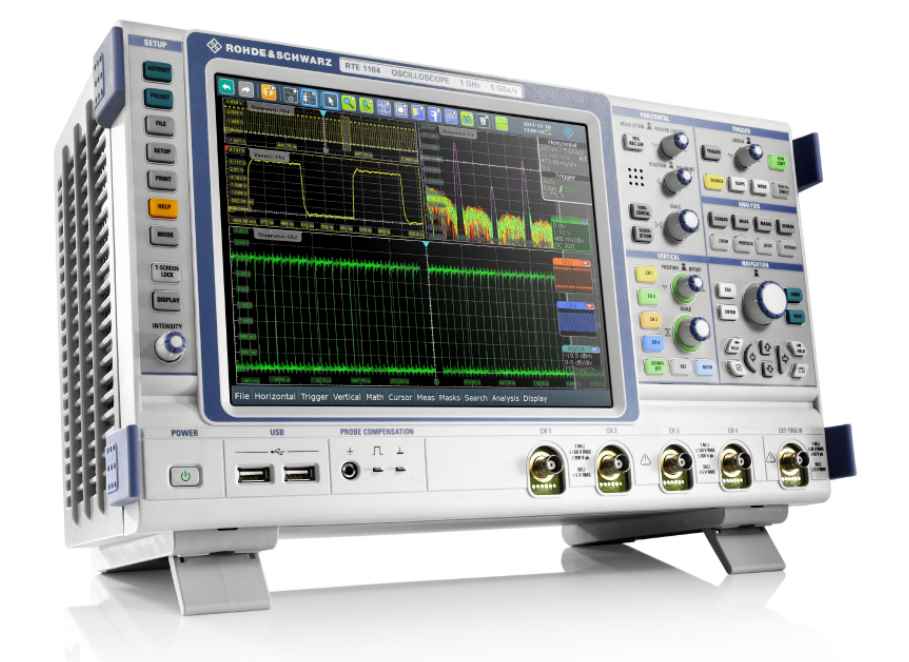 15 December 2014 - Rohde & Schwarz offers an a new protocol analysis solutions for its R&S RTE and R&S RTO oscilloscopes. The new option enables design engineers to analyze CAN interfaces that support the high-speed CAN FD (flexible data) bus protocol. These interfaces are seeing increased use in automotive and industry applications due to rising data rate requirements.
15 December 2014 - Rohde & Schwarz offers an a new protocol analysis solutions for its R&S RTE and R&S RTO oscilloscopes. The new option enables design engineers to analyze CAN interfaces that support the high-speed CAN FD (flexible data) bus protocol. These interfaces are seeing increased use in automotive and industry applications due to rising data rate requirements.
Teledyne LeCroy extends WaveSurfer 3000 Oscilloscopes with 750 MHz Model
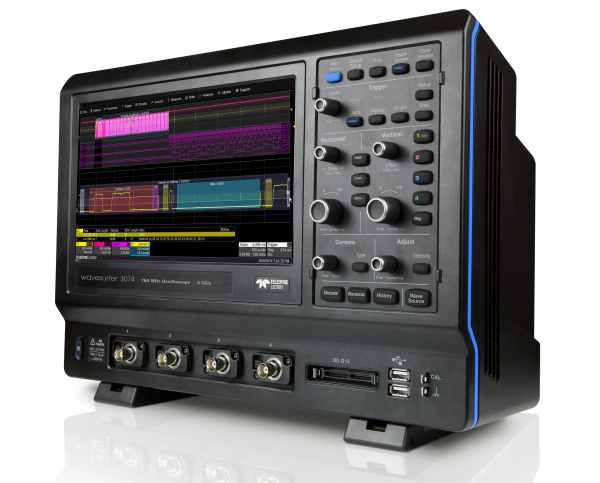 11 December 2014 – Teledyne LeCroy introduced the WaveSurfer 3074, extending the bandwidth range of the popular WaveSurfer 3000 series of oscilloscopes to 750 MHz. WaveSurfer 3000 oscilloscopes feature the MAUI advanced user interface, previously available only on higher-end oscilloscopes. Starting at 200 MHz and now reaching 750 MHz, the WaveSurfer 3000 oscilloscopes features a large 10.1” touch screen, 10 Mpts/channel memory and up to 4 GS/s sample rate.
11 December 2014 – Teledyne LeCroy introduced the WaveSurfer 3074, extending the bandwidth range of the popular WaveSurfer 3000 series of oscilloscopes to 750 MHz. WaveSurfer 3000 oscilloscopes feature the MAUI advanced user interface, previously available only on higher-end oscilloscopes. Starting at 200 MHz and now reaching 750 MHz, the WaveSurfer 3000 oscilloscopes features a large 10.1” touch screen, 10 Mpts/channel memory and up to 4 GS/s sample rate.
More than just an oridnary Scope
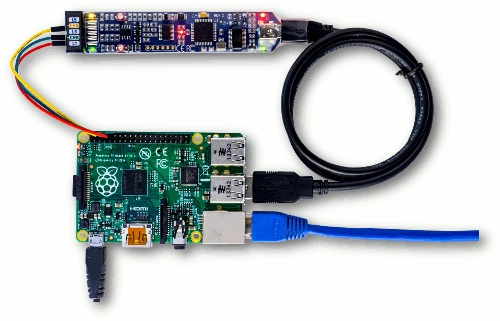 Are you looking for something special? There are some instruments available on the market that offer many additional functions or unique features conventional oscilloscopes do not have. Examples are oscilloscopes with 8 or 80 channels, 16 bit resolution (conventional scopes have only 8 bit), a mini USB scope with function generator, spectrum, logic and protocol analyzer weighing just 12 grams, a combination of oscilloscope and power analyzer or a scope integrating 5 other instruments.
Are you looking for something special? There are some instruments available on the market that offer many additional functions or unique features conventional oscilloscopes do not have. Examples are oscilloscopes with 8 or 80 channels, 16 bit resolution (conventional scopes have only 8 bit), a mini USB scope with function generator, spectrum, logic and protocol analyzer weighing just 12 grams, a combination of oscilloscope and power analyzer or a scope integrating 5 other instruments.
PicoScope breaks the 100,000 waveforms per second barrier!
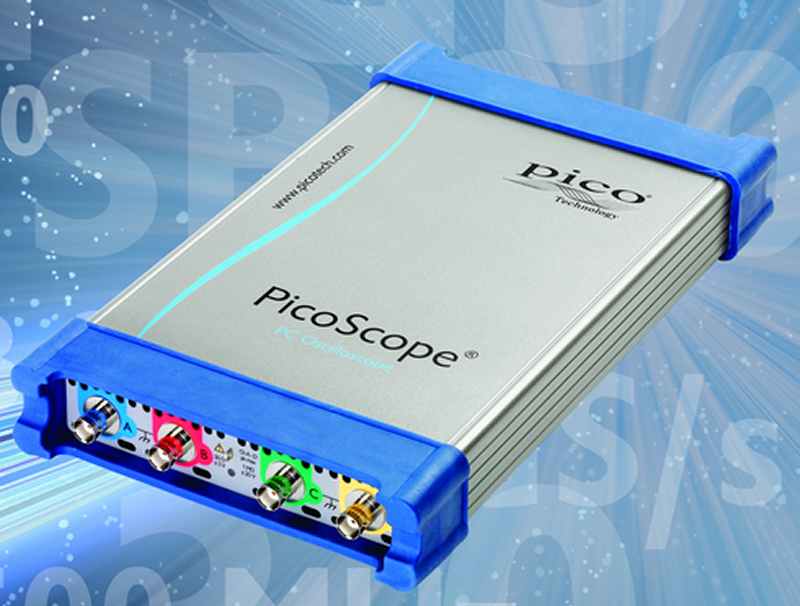 02 December 2014 - Pico Technology improved its PicoScope 6 software for PC oscilloscopes and increased the continuous update rate to more than 100,000 waveforms per second. This is faster than any other PC oscilloscope, and beats many expensive benchtop oscilloscopes too.
02 December 2014 - Pico Technology improved its PicoScope 6 software for PC oscilloscopes and increased the continuous update rate to more than 100,000 waveforms per second. This is faster than any other PC oscilloscope, and beats many expensive benchtop oscilloscopes too.
Test, Debug and Analysis Tools for the entire DDR Design Cycle
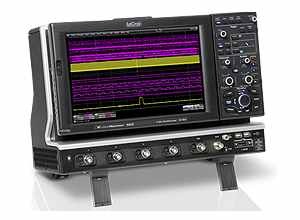 01 December 2014 — Teledyne LeCroy introduces the DDR Debug Toolkit for complete physical layer analysis of DDR 2/3/4 and LPDDR2/3 signals. Most oscilloscope-based DDR physical layer test tools on the market are targeted exclusively at JEDEC compliance testing, whereas the DDR Debug Toolkit provides test, debug and analysis tools for the entire DDR design cycle, making it the ultimate DDR analysis package. The DDR Debug Toolkit includes numerous, time saving industry firsts to simplify DDR testing.
01 December 2014 — Teledyne LeCroy introduces the DDR Debug Toolkit for complete physical layer analysis of DDR 2/3/4 and LPDDR2/3 signals. Most oscilloscope-based DDR physical layer test tools on the market are targeted exclusively at JEDEC compliance testing, whereas the DDR Debug Toolkit provides test, debug and analysis tools for the entire DDR design cycle, making it the ultimate DDR analysis package. The DDR Debug Toolkit includes numerous, time saving industry firsts to simplify DDR testing.
Rigol releases Software for Testing Switching Power Supplies
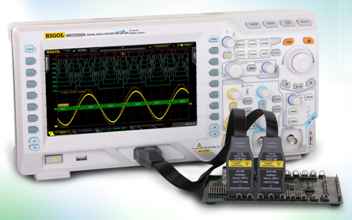 28 November 2014 – Rigol Technologies EU has released a new PC Software, which enables users to perform standard measurements on switching power supplies. This software, in combination with Rigol oscilloscopes (series DS/MSO2000A, DS4000 or DS6000) allows customers to set up small test systems, which represent a reasonably priced alternative for measuring switching power supply parameters during the development phase.
28 November 2014 – Rigol Technologies EU has released a new PC Software, which enables users to perform standard measurements on switching power supplies. This software, in combination with Rigol oscilloscopes (series DS/MSO2000A, DS4000 or DS6000) allows customers to set up small test systems, which represent a reasonably priced alternative for measuring switching power supply parameters during the development phase.
New Measurement and Graphing Capabilities for CAN FD Analysis
 27 November 2014 – Teledyne LeCroy announced the addition of unique measurement and graphing capabilities to their CAN Flexible Data-Rate (FD) serial trigger and decode solution. The new CAN FD solution (CAN FD TDM) enables designers using this new standard to gain unprecedented insight in to their systems, correlating physical layer signals and protocol layer data on a single display while also measuring and plotting bus performance. These tools can be used to measure the time between two CAN or CAN FD messages, or from a message to an analog signal. These measurements can then be extracted to recreate analog waveforms.
27 November 2014 – Teledyne LeCroy announced the addition of unique measurement and graphing capabilities to their CAN Flexible Data-Rate (FD) serial trigger and decode solution. The new CAN FD solution (CAN FD TDM) enables designers using this new standard to gain unprecedented insight in to their systems, correlating physical layer signals and protocol layer data on a single display while also measuring and plotting bus performance. These tools can be used to measure the time between two CAN or CAN FD messages, or from a message to an analog signal. These measurements can then be extracted to recreate analog waveforms.
Oscilloscope Basics |
A Comparison between Oscilloscopes and Spectrum Analyzers
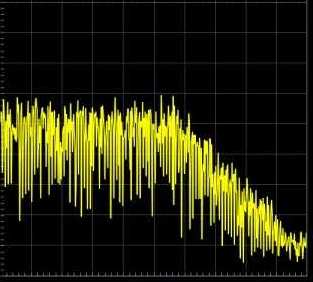 Whether it is for a land survey searching for minerals on Earth, or for a space exploration in search of alien life forms, the analysis of any signal boils down to looking at its time and frequency information. While an oscilloscope displays a signal with respect to time, a spectrum analyzer shows it with respect to frequency. Both of these tools are very important in any signal analysis application. This article explains the difference between oscilloscope and spectrum analyzer using examples.
Whether it is for a land survey searching for minerals on Earth, or for a space exploration in search of alien life forms, the analysis of any signal boils down to looking at its time and frequency information. While an oscilloscope displays a signal with respect to time, a spectrum analyzer shows it with respect to frequency. Both of these tools are very important in any signal analysis application. This article explains the difference between oscilloscope and spectrum analyzer using examples.
Oscilloscope Background |
A simple method to verify the bandwidth of your probe
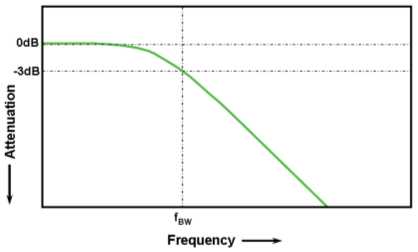 In oscilloscopes or oscilloscope probes, bandwidth is a measure of the width of a range of frequencies measured in Hertz. Specifically, bandwidth is specified as the frequency at which a sinusoidal input signal is attenuated to 70.7 percent of its original amplitude, also known as the -3 dB point. Most oscilloscope companies design the scope/probe response to be as flat as possible throughout its specified frequency range, and most customers simply rely on the specified bandwidth of the oscilloscope or oscilloscope probes, wondering if they are indeed getting the bandwidth performance at the probe tip. Now you can use these step-by-step instructions to simply measure and verify the bandwidth of your probe with an oscilloscope you may already have.
In oscilloscopes or oscilloscope probes, bandwidth is a measure of the width of a range of frequencies measured in Hertz. Specifically, bandwidth is specified as the frequency at which a sinusoidal input signal is attenuated to 70.7 percent of its original amplitude, also known as the -3 dB point. Most oscilloscope companies design the scope/probe response to be as flat as possible throughout its specified frequency range, and most customers simply rely on the specified bandwidth of the oscilloscope or oscilloscope probes, wondering if they are indeed getting the bandwidth performance at the probe tip. Now you can use these step-by-step instructions to simply measure and verify the bandwidth of your probe with an oscilloscope you may already have.

 How to resolve AdBlock issue?
How to resolve AdBlock issue?